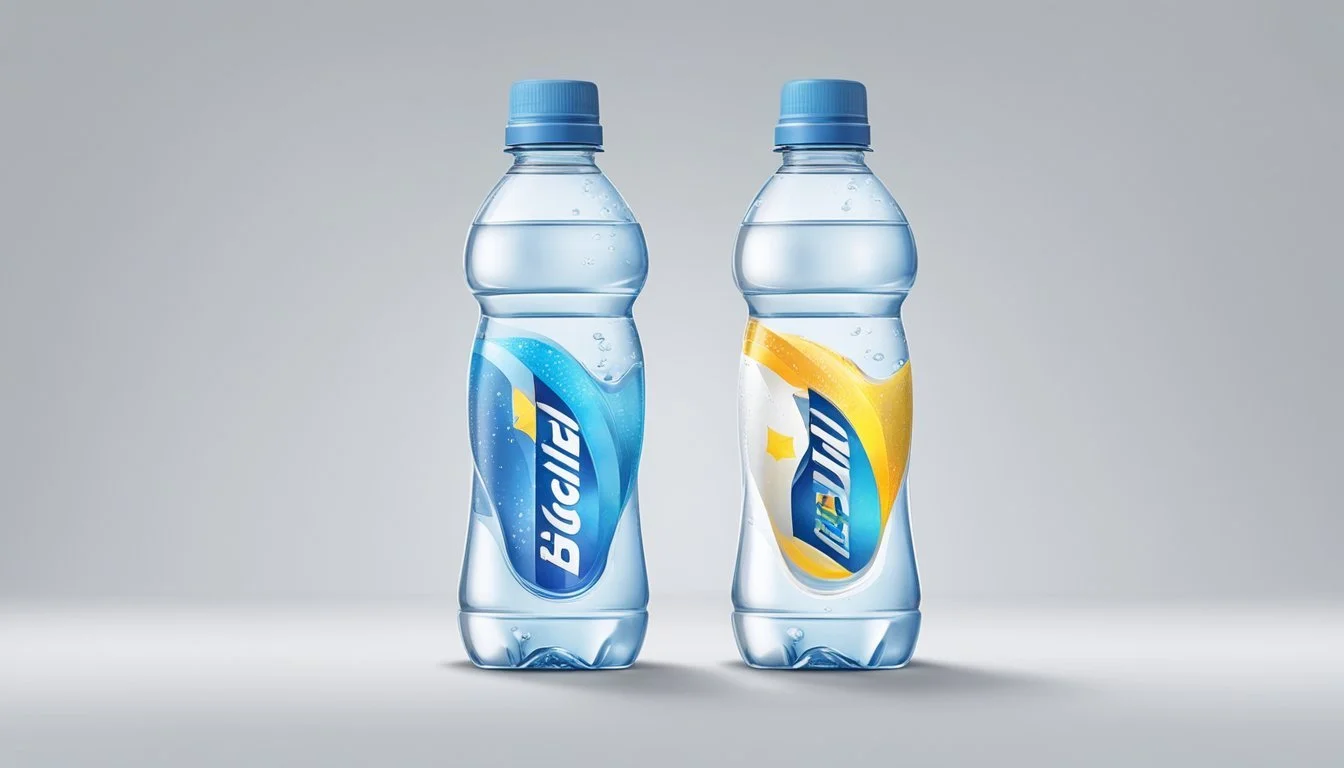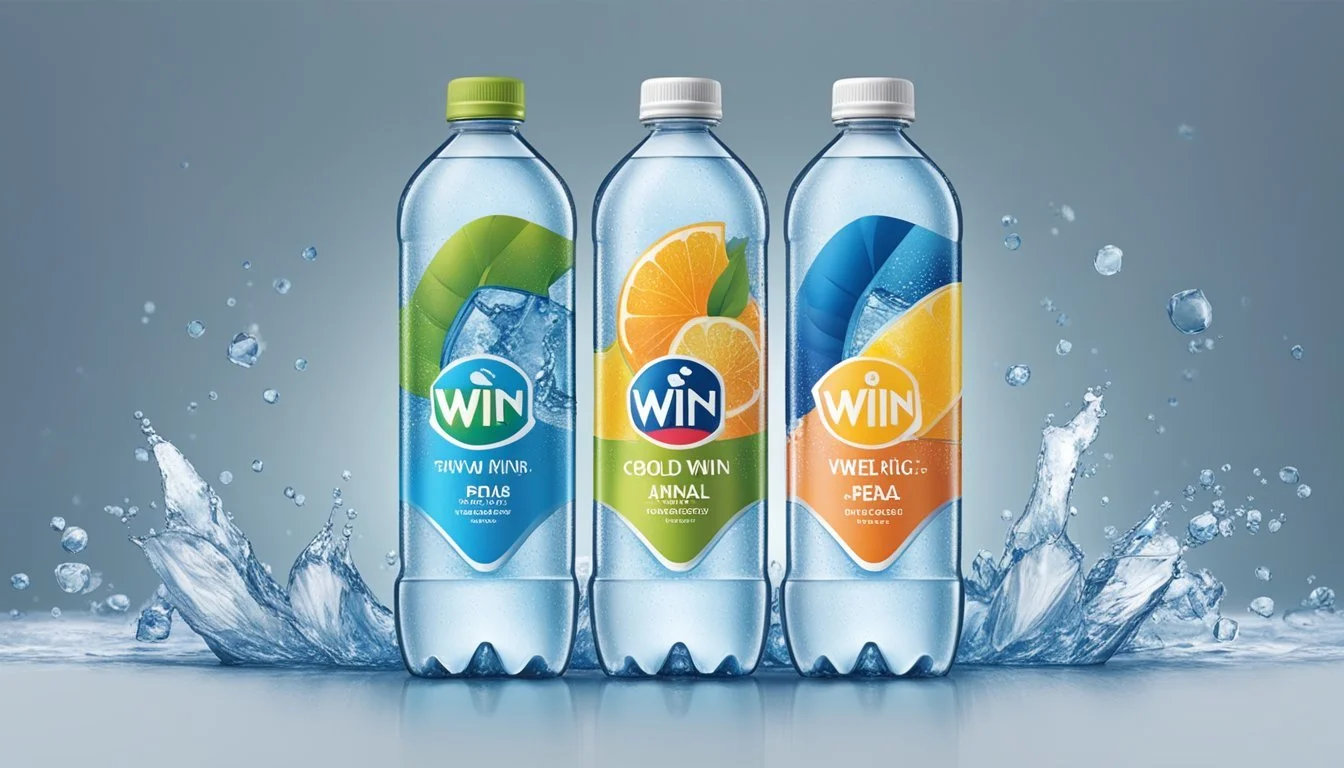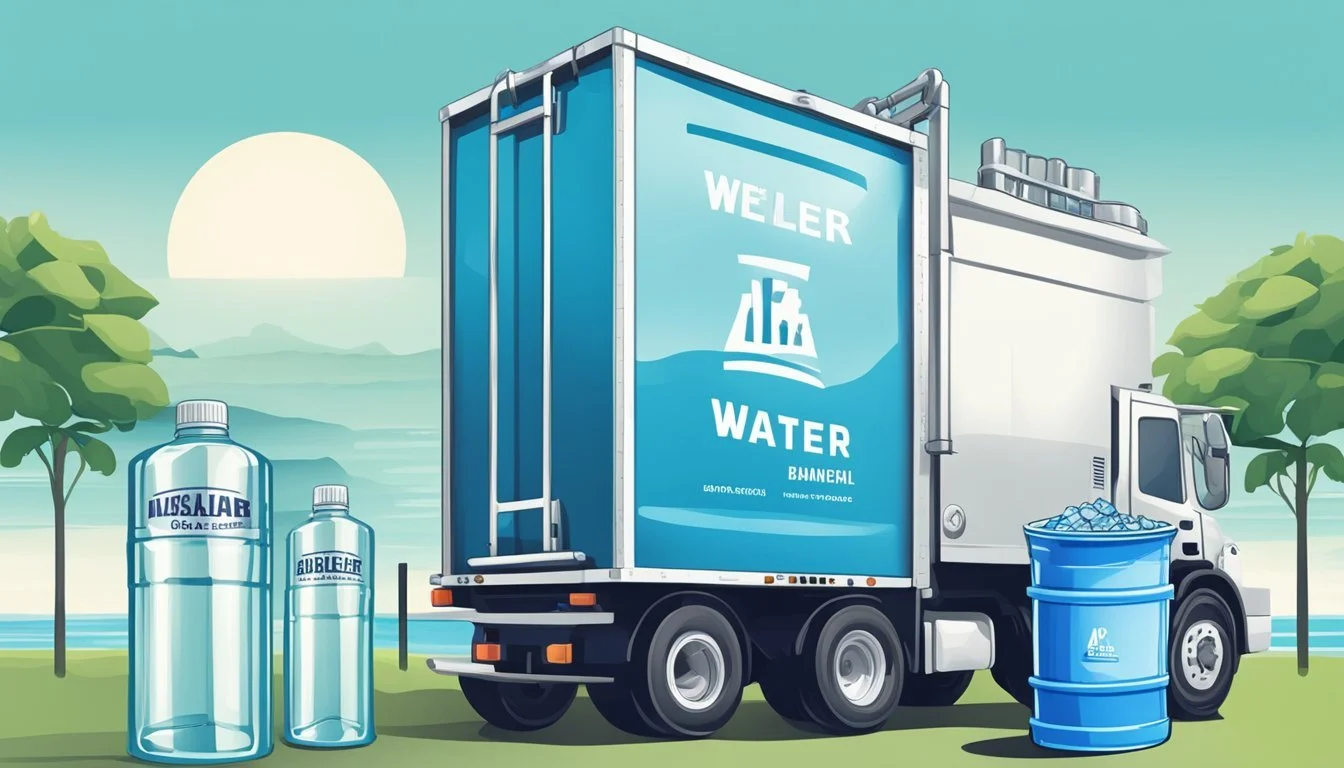The Well vs. Big Win
Comparing Quality and Value in Bottled Water
When it comes to selecting the best bottled water, the debate between The Well and Big Win is quite relevant. Bottled water enthusiasts are often faced with a choice that pits taste, health benefits, and environmental impact against each other. The Well promises pure, refreshing water that appeals to health-conscious consumers, while Big Win positions itself as a reliable option with a slightly more cost-effective edge.
For those prioritizing taste and perceived quality, The Well generally emerges as the preferred choice. Utilizing advanced filtration techniques, The Well ensures a clean and crisp taste that satisfies even the most discerning palates. Big Win, on the other hand, also utilizes reverse osmosis and multiple filtration stages, offering a clean taste but sometimes perceived as less refined compared to The Well.
Environmental considerations play a significant role in the decision-making process. The Well sources its water locally, potentially reducing transportation emissions and its overall carbon footprint. Conversely, Big Win, being a product of Rite Aid, often imports its water, which can contribute to a higher environmental impact.
Understanding Bottled Water
Bottled water varies widely in terms of its source, mineral content, and taste. It is subject to certain regulations and safety standards to ensure its quality and safety for consumers. This section examines the different types of bottled water, the applicable regulations and safety standards, and how bottled water compares to tap water.
Different Types of Bottled Water
Bottled water is available in several varieties, each with unique sources and characteristics. Spring water comes from underground formations and must flow naturally to the surface. Mineral water contains no less than 250 parts per million total dissolved solids and comes directly from a protected underground source.
Purified water undergoes processes like distillation or reverse osmosis to remove impurities, making it very clean, and is often sourced from municipal supplies. Artesian water originates from a confined aquifer, which is a water-bearing underground layer of rock or sand. Alkaline water has a higher pH level, which some consumers believe may offer health benefits.
Regulations and Safety Standards
In the United States, bottled water is regulated by the FDA to ensure it meets safety and labeling standards. The source, whether a natural spring or municipal water, must be protected from contamination. The bottling process must follow stringent procedures to maintain purity and safety.
Municipal water supplies, in contrast, are regulated by the EPA, which sets enforceable quality standards. Both the FDA and EPA have guidelines that include limits on contaminants, ensuring that drinking water is safe. Bottled water must also go through frequent testing and must be processed in sanitary conditions.
Bottled Water Vs. Tap Water
Tap water is typically much more cost-effective compared to bottled water, often costing a fraction of a cent per gallon. Despite its lower cost, tap water can be equally safe and is often subjected to more stringent regulations.
Bottled water's convenience and portability make it a popular choice despite its higher price. Some bottled water options, like those containing additional minerals or a specific pH level, might be preferred by consumers for their taste or potential health benefits. However, it is important to note that not all bottled water offers significant advantages over tap water.
Analyzing Water Quality and Purity
The quality of bottled water depends heavily on the rigorousness of its testing and the effectiveness of its filtration methods. Comparing The Well and Big Win, the focus will be on their adherence to quality standards and the extent of contaminants removed.
Testing and Certification
The Well and Big Win undergo various quality assessments to ensure consumer safety. The Well regularly submits its products for independent third-party testing. These tests check for contaminants like chlorine, fluoride, and bacteria, ensuring compliance with international safety standards.
Big Win also follows stringent testing protocols. Their water is evaluated by both internal and external laboratories to maintain high purity levels. Certification from recognized bodies guarantees that both brands meet the required sanitation and quality metrics.
Contaminants and Filtration Methods
To achieve clean water, The Well employs an advanced filtration system which includes reverse osmosis. This method effectively removes impurities such as heavy metals and bacteria, ensuring a high level of purity. Additionally, The Well adjusts the alkalinity and acidity to provide a balanced taste.
Big Win uses a similar multi-step filtration process that includes chlorine removal and reverse osmosis. Their system is designed to eliminate contaminants and maintain neutral pH levels. This process ensures the eradication of harmful substances while preserving the water’s natural qualities.
Both brands aim to provide safe, clean drinking water through rigorous purification techniques, offering consumers confidence in the quality and safety of their products.
Comparing Health Implications
Evaluating the health implications of bottled water requires examining factors like hydration, electrolyte content, and mineral content. Both The Well and Big Win provide different profiles of these elements that could influence one’s choice depending on personal health needs.
Hydration and Electrolyte Content
The Well offers water sourced from an artesian well, which typically includes naturally occurring electrolytes like sodium, potassium, and magnesium. These electrolytes aid in maintaining fluid balance, muscle function, and overall hydration.
Big Win, often marketed as a purified water brand, relies on a purification process that may remove some of the natural electrolytes found in its original source. Though it’s clean and crisp, it may lack the essential electrolytes that aid in quicker rehydration post-exercise or in hot climates.
For those needing enhanced hydration with added electrolytes, The Well might be a more suitable option. Big Win, however, can be ideal for those seeking straightforward, pure water without added minerals.
Mineral Content and Health Benefits
The Well water, claimed to be from an ancient artesian source, contains a variety of minerals that contribute to health benefits. Minerals like calcium and magnesium are present, which are essential for bone health and muscle function.
Big Win, which often undergoes a rigorous purification process, may remove some minerals found in natural water sources. Thus, its mineral content might be significantly lower compared to The Well.
While The Well offers added health benefits through its mineral-rich content, ideal for those looking to supplement their diet with these important nutrients, Big Win provides a simpler profile with fewer added benefits but meets basic hydration needs effectively.
Environmental Impact and Sustainability
Evaluating the environmental impact and sustainability of bottled water involves examining the effects of plastic bottles and the conservation of water sources. These factors are crucial in determining the eco-friendliness of bottled water alternatives.
Plastic Bottles and Eco-Friendly Alternatives
Traditional plastic bottles have a significant environmental impact. Producing bottled water requires large amounts of energy and resources, resulting in high carbon footprints. For instance, creating a single plastic bottle can emit up to 22 oz of CO2. Additionally, it takes three times as much water to produce the bottle as it can hold.
Switching to eco-friendly alternatives like glass bottles or reusable bottles reduces these negative effects. Glass bottles, though heavier, do not leach chemicals and are infinitely recyclable. Reusable bottles, made from materials like stainless steel, offer long-term sustainability and lower overall environmental costs.
Water Source Conservation
Another critical factor is the conservation of natural water sources. Bottled water often comes from spring or groundwater sources, which can lead to depletion and environmental degradation. High demand for bottled water can strain these natural reserves and negatively impact local ecosystems.
Implementing sustainable practices in water sourcing, such as limiting the extraction rates and protecting surrounding ecosystems, can mitigate these concerns. Companies can also invest in better technologies to improve efficiency and reduce the environmental footprint of water extraction and bottling processes.
Taste and Consumer Preference
When comparing The Well and Big Win bottled water brands, it is essential to look into the specific taste profiles and consumer preferences. Both brands offer distinct flavors and qualities that attract different types of consumers.
Taste Profiles and Preferences
The Well is known for its crisp and clean taste, derived from its source in natural springs. Its flavor profile is neutral, making it appealing to those who prefer a subtle and refreshing water taste. Big Win, on the other hand, often has a slightly more mineral taste due to its composition, which can be preferred by those who enjoy a richer water flavor.
Consumer preferences vary significantly between these two brands. Some individuals prefer the purity and simplicity of The Well, which is often perceived as high-quality water for everyday consumption. Others favor Big Win for its more distinctive taste, which can be described as slightly more robust and fulfilling.
Blind Taste Tests and Perceived Quality
Blind taste tests are a method used to assess the preference and perceived quality of bottled water brands without bias. In such tests, participants often rate The Well highly for its smooth and refreshing characteristics, enjoying its crispness without any aftertaste.
Big Win performs well in blind taste tests too, particularly among those who appreciate a water that offers a definitive mineral profile. Its taste is often described as more pronounced and satisfying for those who look for a distinct flavor in their hydration choices.
These taste tests reveal that while both brands are favored, preferences often hinge on whether a consumer enjoys a more straightforward, clean taste or a richer, more mineral-infused water experience. The perceived quality of both is high, reflecting the premium status of these bottled water brands.
Brand Analysis: Big Win vs. The Well
When comparing Big Win and The Well, key differences emerge in their origins and available product lines. Both brands strive to provide quality bottled water, yet they cater to distinct market segments and priorities.
Brand Origins and Sources
Big Win is a proprietary brand of Rite Aid, primarily targeting budget-conscious consumers. The water sources are typically municipal, undergoing filtration processes to ensure cleanliness and safety.
The Well, meanwhile, offers premium quality bottled water sourced from natural springs, emphasizing purity and sustainability. These natural springs are often located in pristine environments, ensuring minimal contamination and high mineral content.
Product Line Overview
Big Win boasts a straightforward product line focused on affordability. It includes standard purified water in various bottle sizes, catering to everyday hydration needs without added frills.
The Well features a more diverse product line including alkaline options, sparkling water, and mineral-rich offerings. This brand's varied selections appeal to health-conscious consumers seeking more than just basic hydration, showcasing an emphasis on wellness benefits.
Price Comparison and Value
When coparing The Well and Big Win bottled water brands, the focus lies on cost analysis and their affordability and accessibility to consumers. Each brand offers distinct pricing strategies that cater to different consumer needs.
Cost Analysis
The Well is positioned as a premium brand with a higher price point.
A 16.9 fl oz bottle typically costs around $1.50.
In contrast, Big Win offers competitive pricing, with the same size bottle priced around $0.99.
The difference in cost highlights the premium nature of The Well, which often emphasizes quality and taste, while Big Win aims to provide budget-friendly hydration solutions for cost-conscious consumers.
Affordability and Accessibility
Big Win excels in affordability through its lower price point, making it a popular choice in many grocery and convenience stores.
Availability: Widespread in various retail outlets.
Price: More accessible to consumers from all economic backgrounds.
The Well, though higher in cost, also maintains a strong presence in upscale grocery stores and health-focused retailers.
Accessibility: Preferred by consumers willing to invest in premium water. Affordability: Aimed at those prioritizing quality over cost.
The value proposition for each brand depends on consumer priorities; Big Win appeals to budget-conscious shoppers, while The Well targets those seeking premium quality regardless of the higher price.
Consumer Accessibility
The Well and Big Win are bottled water brands with different levels of accessibility in various retail channels. Their respective availability impacts consumer convenience and purchasing decisions.
Retail Availability
The Well is widely available in many retail stores, including both large grocery chains and smaller convenience stores. This broad distribution ensures that consumers can easily find The Well water when doing their regular grocery shopping or making a quick stop at a convenience store.
Conversely, Big Win bottled water can be primarily found in select grocery stores and is more commonly stocked in convenience stores. Big Win leverages its strong presence in convenience stores to capture spontaneous purchases, benefiting from high visibility in locations where consumers often make quick buying decisions.
Their distribution strategies reflect their target consumers, with The Well focusing on grocery shoppers and Big Win targeting convenience shoppers.
Conclusion
When comparing The Well and Big Win bottled water brands, several factors come into play.
Consumption: Many consumers prioritize taste. The Well offers a clean, crisp flavor, whereas Big Win has a subtle mineral tang.
Global Sales: Both brands have substantial market shares. The Well focuses on premium markets, while Big Win targets a broader audience.
Quality: Quality is apparent in The Well's meticulous purification process and use of natural springs. Big Win, although purified through reverse osmosis, may have varying mineral content.
Hydration: Both brands effectively fulfill hydration needs, providing essential minerals and being easily accessible.
Environment: Big Win, given its wider distribution network, may have a higher carbon footprint compared to The Well, which emphasizes local sourcing to minimize environmental impact.
Ultimately, the choice between The Well and Big Win depends on individual preferences and priorities.
More About The Well
Cascade Mountain vs The Well: Which Bottled Water is Better?
Hawaiian Springs vs The Well: Which Bottled Water is Better?
Icelandic Glacial vs The Well: Which Bottled Water is Better?
Mountain Valley Spring Water vs The Well: Which Bottled Water is Better?
Nestle Pure Life vs The Well: Which Bottled Water is Better?
Richard's Rainwater vs The Well: Which Bottled Water is Better?
The Well vs Kirkland Signature: Which Bottled Water is Better?
The Well vs Talking Rain AQA: Which Bottled Water is Better?
Whole Foods Italian Still Mineral water vs The Well: Which Bottled Water is Better?
More About Big Win
Big Win vs Kirkland Signature: Which Bottled Water is Better?
Icelandic Glacial vs Big Win: Which Bottled Water is Better?
Mountain Valley Spring Water vs Big Win: Which Bottled Water is Better?
Richard's Rainwater vs Big Win: Which Bottled Water is Better?
Whole Foods Italian Still Mineral water vs Big Win: Which Bottled Water is Better?






